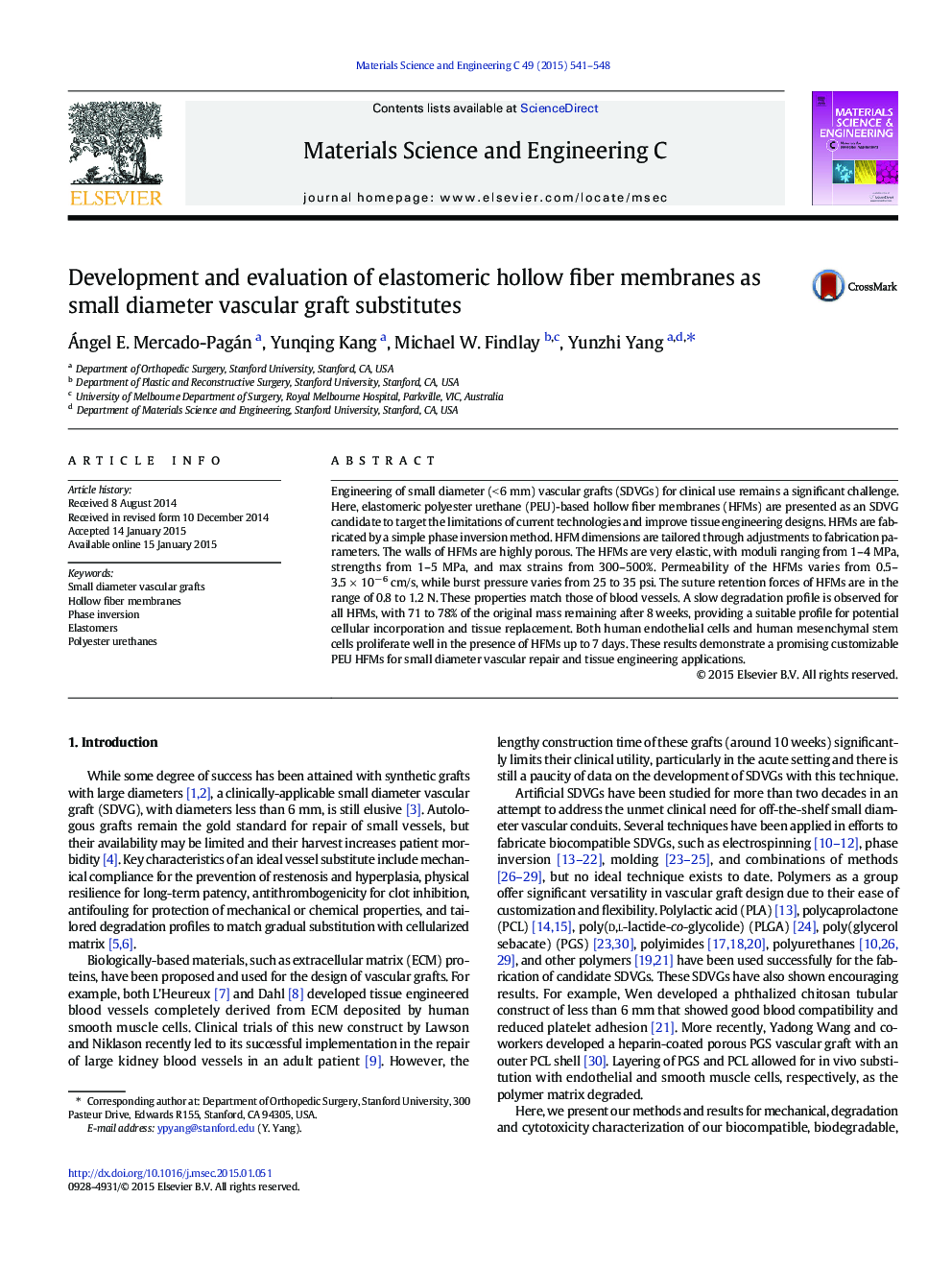| Article ID | Journal | Published Year | Pages | File Type |
|---|---|---|---|---|
| 1428210 | Materials Science and Engineering: C | 2015 | 8 Pages |
•Hollow fiber membranes (HFMs) were fabricated and evaluated.•HFM properties could be tailored through adjustments to fabrication parameters.•Properties could match or exceed those of blood vessels.•HFM showed excellent compatibility in vitro.•HFMs have the potential to be used for small diameter vascular grafts.
Engineering of small diameter (< 6 mm) vascular grafts (SDVGs) for clinical use remains a significant challenge. Here, elastomeric polyester urethane (PEU)-based hollow fiber membranes (HFMs) are presented as an SDVG candidate to target the limitations of current technologies and improve tissue engineering designs. HFMs are fabricated by a simple phase inversion method. HFM dimensions are tailored through adjustments to fabrication parameters. The walls of HFMs are highly porous. The HFMs are very elastic, with moduli ranging from 1–4 MPa, strengths from 1–5 MPa, and max strains from 300–500%. Permeability of the HFMs varies from 0.5–3.5 × 10− 6 cm/s, while burst pressure varies from 25 to 35 psi. The suture retention forces of HFMs are in the range of 0.8 to 1.2 N. These properties match those of blood vessels. A slow degradation profile is observed for all HFMs, with 71 to 78% of the original mass remaining after 8 weeks, providing a suitable profile for potential cellular incorporation and tissue replacement. Both human endothelial cells and human mesenchymal stem cells proliferate well in the presence of HFMs up to 7 days. These results demonstrate a promising customizable PEU HFMs for small diameter vascular repair and tissue engineering applications.
Graphical abstractFigure optionsDownload full-size imageDownload as PowerPoint slide
